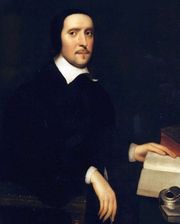
When you spend your days in research, with millions of ideas and tangents whirling around you, once in a while, out of the chaos, it is possible to view some order. In other words, there seems to be a divine nerd providence--you stumble upon certain things at the right time. This happens often. Sometimes it's refreshing to have the slightly different experience of stumbling on passages that are relevant to your personal life. Just as i was dreading the long hours of prayer prior to Rosh Hashanah, i happened to also be reviewing Jeremy Taylor's Holy Living (which you can read here), and i stumbled upon his section on prayer:There is no greater proof in the world of our spiritual danger than the reluctance which most people always have and all people sometimes have to pray; so weary of their length, so glad when they are done, so clever to excuse and neglect their opportunity. Yet, prayer is nothing but desiring God to give us the greatest and best things we can have and that can make us happy. It is a work so easy, so honorable, and to so great a purpose that […] God has never given us greater argument of his willingness to accept it, of His goodness and our gracelessness, of His infinite condescension and our folly, then by rewarding so easy a duty with such great blessing.
I considered myself scolded. But, like any good instructor, Taylor also explains the great benefits of prayer:Prayer is the peace of our spirit, the stillness of our thoughts, the evenness of recollection, the seat of meditation, the rest of our cares, and the calm of our tempest. Prayer is the issue of a quite mind, of untroubled thoughts. Prayer can obtain everything. It can open the windows of heaven and shut the gates of hell. It can put a holy constraint upon God and detain an angel till he leave a blessing. It can open the treasures of rain and soften the iron ribs of rocks till they melt into tears and a flowing river. Prayer can arrest the sun in the midst of its course and send the swift-winged winds upon our errand. All those strange things, secret decrees and unrevealed transactions which are of heaven, shall combine in ministry and advantages for the praying man.And, for the more practical minded, within the section on prayer is a sub-section entitled 'Remedies Against Wandering Thoughts in Prayer.'
